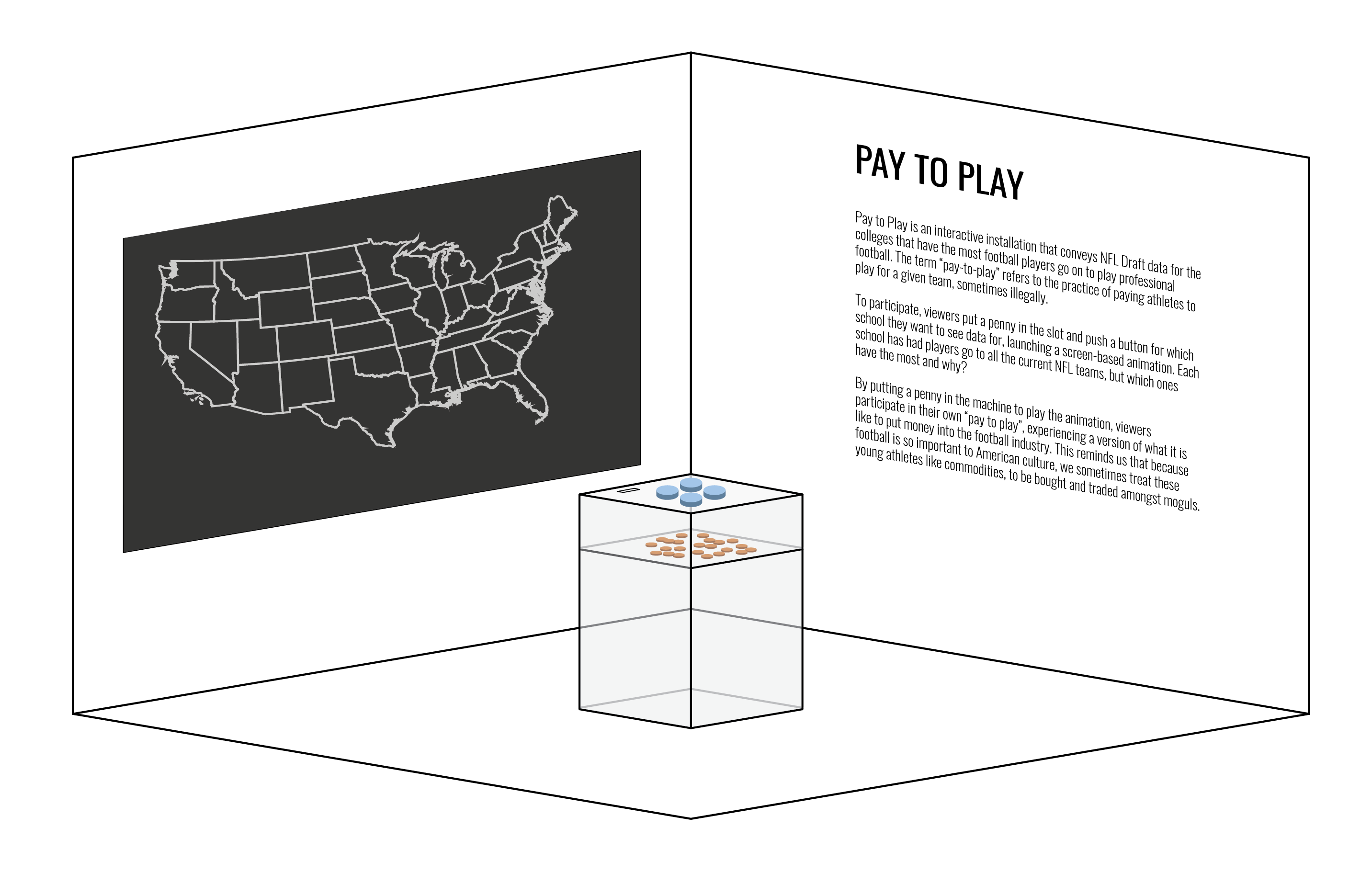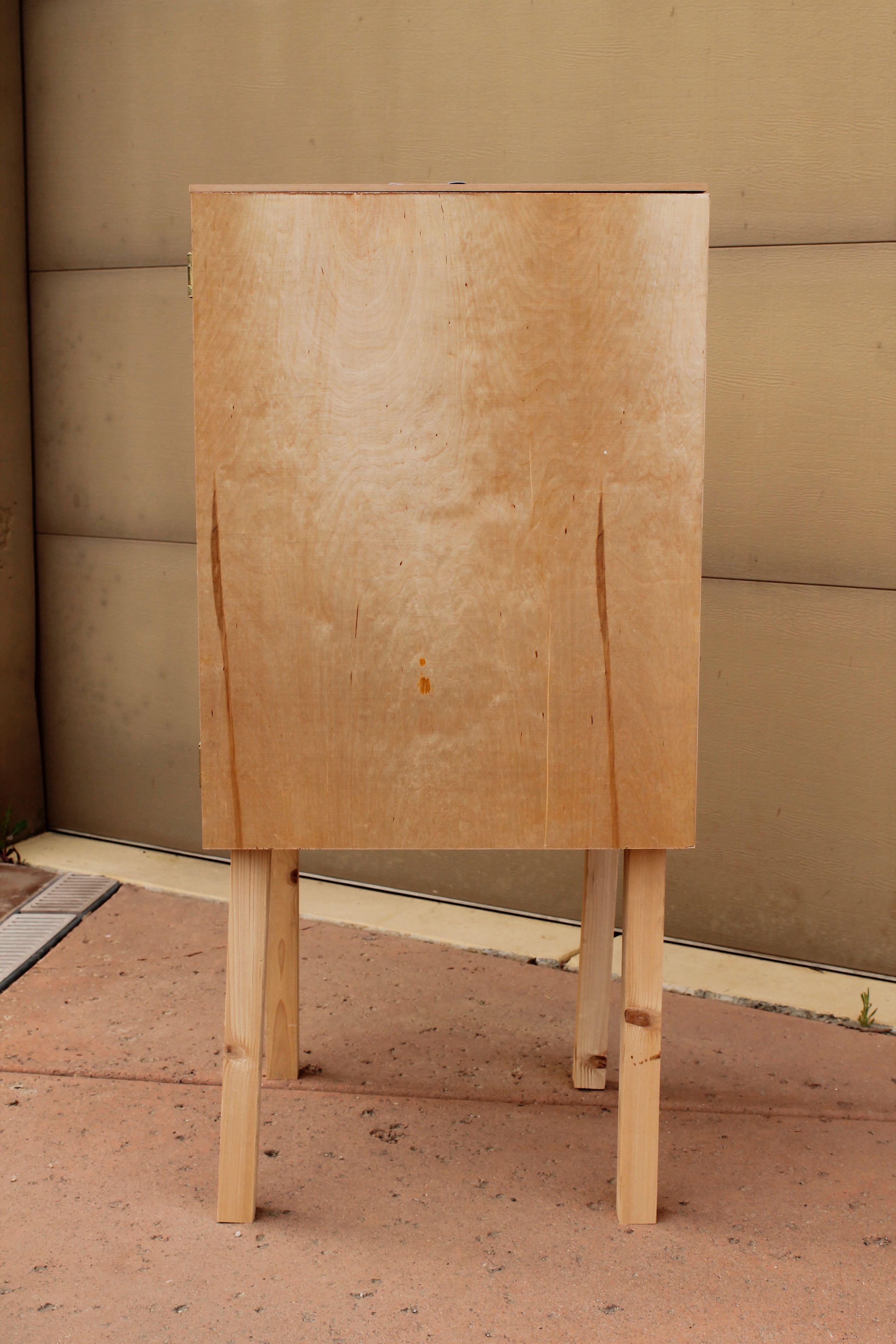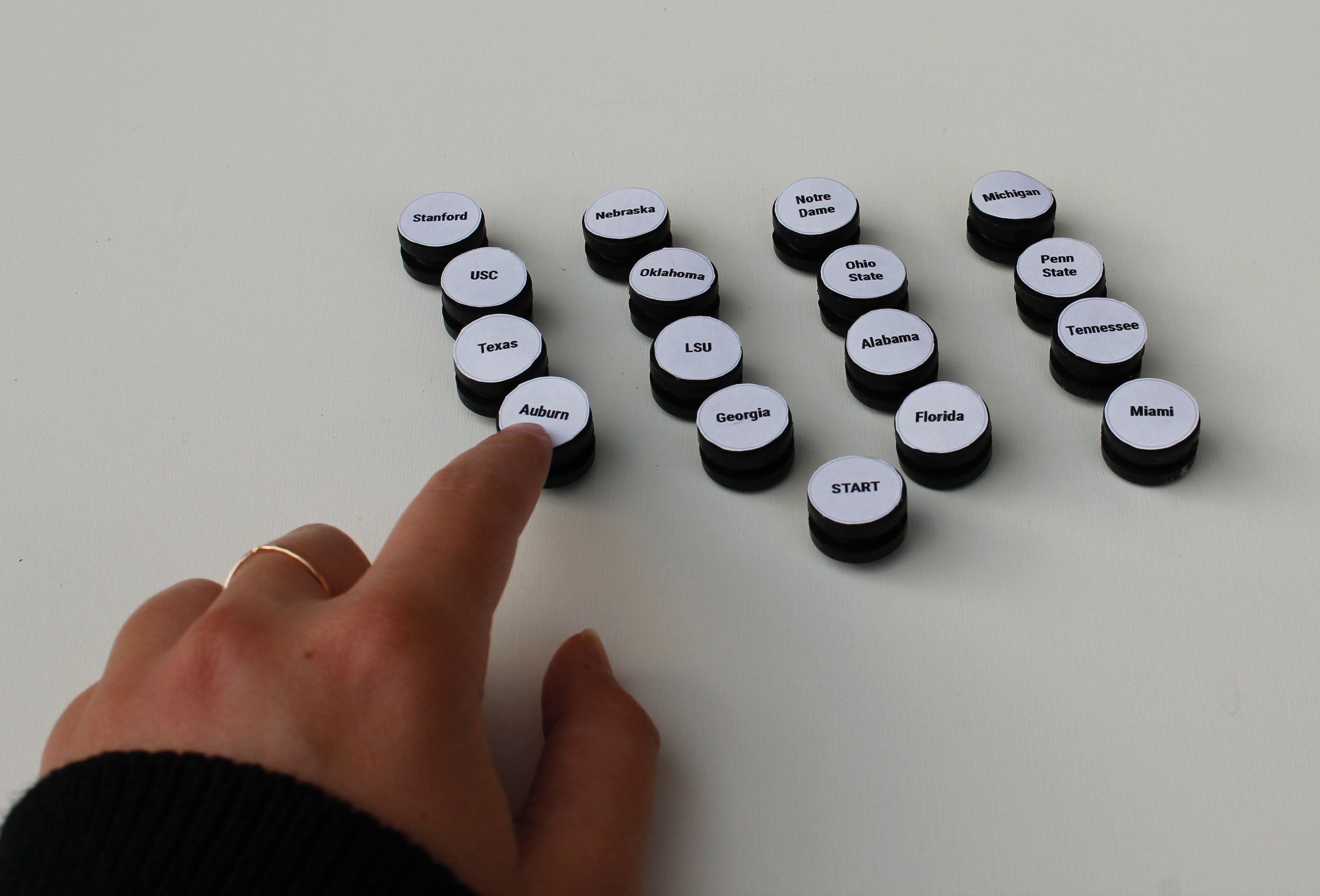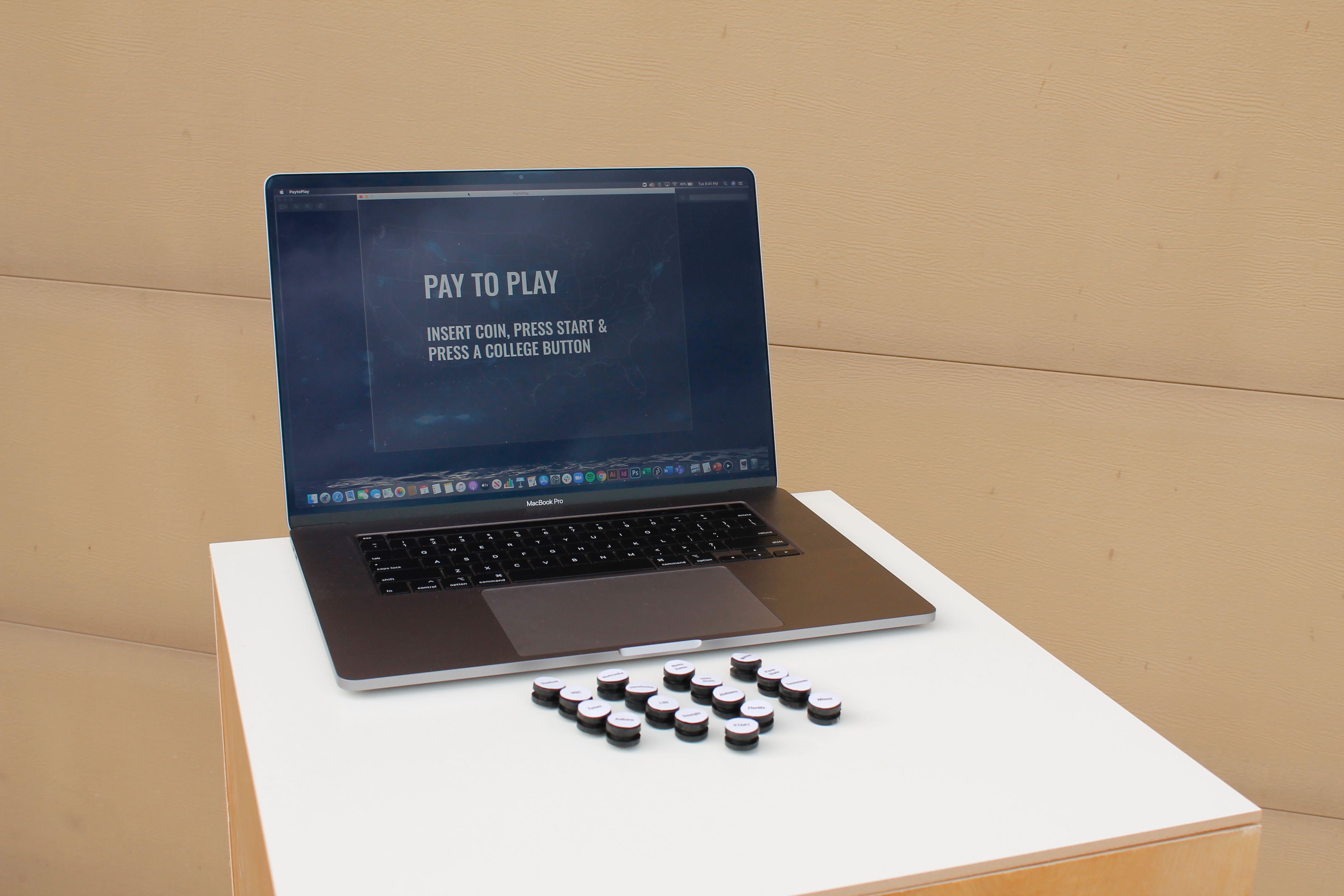Pay to Play
Information Design & Exhibition Proposal
Brief
Create an installation proposal based on a chosen dataset. Then, create at least one aspect of the installation in full scale.
Step 1: Newspaper Data
Collect and analyze data from a chosen section of the newspaper, expand the data from online data bases, create a one-page information graphic with your findings.
While analyzing my dataset, I asked the following questions:
-
How do draft picks change over time?
-
Do top football schools always produce a consistent
amount of NFL draftees?
-
When did schools start getting football reputations?
Can we see these trends?
-
Are more players picked from certain regions?

Newspaper: LA Times
Section: Sports
Topic: NFL Draft data from top colleges since the beginning of the draft in 1936.
Additional dataset source: www.drafthistory.com
Step 2: Installation Proposal
Pay to Play is an interactive installation that conveys NFL Draft data for the colleges that have the most football players go on to play professional football. The term “pay-to-play” refers to the practice of paying athletes to play for a given team, sometimes illegally.
To participate, viewers put a penny in the slot of a podium and push a button for which school they want to see data for, launching a screen-based animation. Each school has had players go to all the current NFL teams, but which ones have the most and why?
By putting a penny in the machine to play the animation, viewers participate in their own “pay to play”, experiencing a version of what it is like to put money into the football industry. This reminds us that because football is so important to American culture, we sometimes treat these young athletes like commodities, to be bought and traded amongst moguls.

Animation Details
The animation shows NFL Draft picks for each top 16 college to each NFL team for all time. The program is built in Processing and uses the original dataset to drive the animation. The lines drawn from the single school to each team are weighted based on the amount of players from that school have been picked by each professional NFL team.
To the right is a demonstration of the Processing sketch. A user pushes buttons on the keyboard to trigger the animations for each school.

Step 3: Full Scale Component
I decided to build the podium from my installation proposal. It is made of 3/4” plywood with a hinged front door, a shelf inside to hold a keyboard, and holes on the top for the buttons to go through.
To trigger the animation, a user pushes the button of their choice. The buttons are short dowells with rubber tops that are lined up to press particular keys on a wireless keyboard in the podium below.
While this is a low-tech solution, it solves the problem of allowing users access to all the keys on the keyboard.






